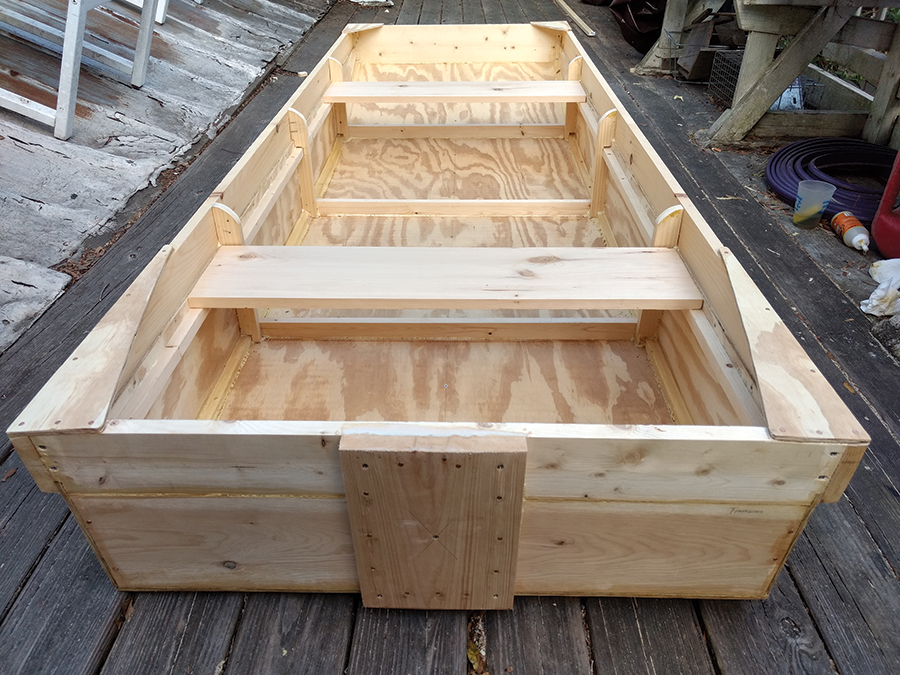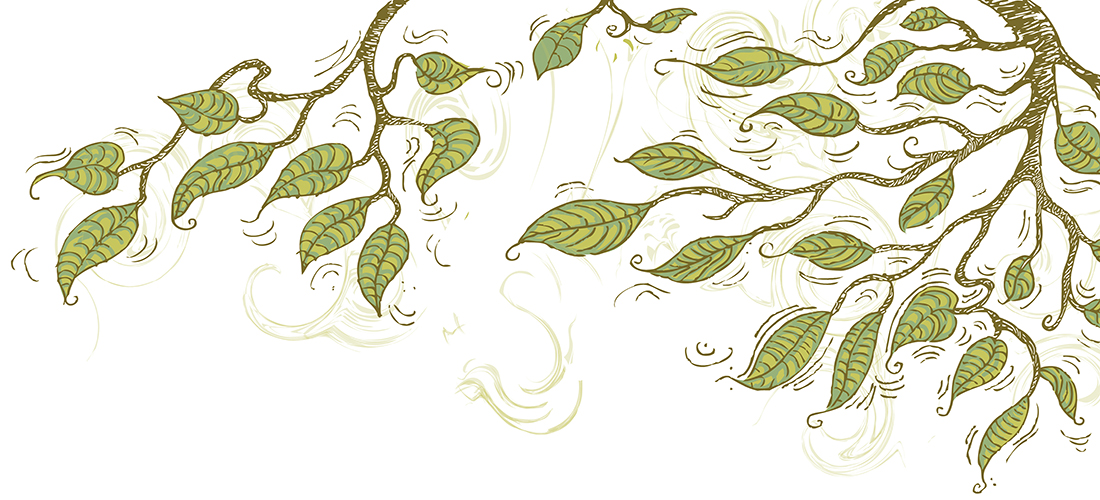Creating a seaworthy craft on your own porch takes vision, good friends, and not a little Gorilla Glue. Popular Science would be proud of Sapona
Story & Photographs by John Wolfe
The decision to build a boat was not, for me, a conscious one, so much as it was already a foregone conclusion. I always knew I would do it someday. I just didn’t expect it to happen so soon.
The 1,600 miles and two weeks of my most recent voyage across the Atlantic — a yacht delivery to St. Thomas — had given me a great buildup of creative and spiritual inertia. I wanted to put it to good use; rather than writing a play or starting another band, I longed to create something physical — tangible — useful. Something that could help me further explore the wild world and waters from which I had recently returned, that through my journey I had only grown to love more. So a boat it had to be.
In the frozen heart of February, my own heart burned cherry-red with my dream. I became a man obsessed. The hours that were not occupied by work, food and sleep (and some of them that were) became a frenzied search through the ocean-crossing cables of the internet, hunting down boatbuilding forums and eavesdropping on discussions. I devoured videos of a Rhode Island shipwright conjuring a lumberyard skiff from a dusty pile of oak; of Chesapeake Bay watermen lofting traditional deadrises; of Kentucky creekboat builders with their thick accents and reverent demeanor; of Pacific craftsmen of traditional proa — sailing outrigger canoes which shunted rather than tacked, their sterns becoming their bows as the wind remained at their backs. And the local boatbuilding tradition didn’t escape my attention, either: I studied both the Masonboro-born Simmons Sea Skiff, and the stout traditional lines of Harker’s Island workboats.

As it was the off season and my savings had been mostly spent on island rum, buying plans was out of the question. So instead I scouted through the public domain for small-boat designs put there by age or intention. There were dozens; to test them, I spent long winter evenings over my late grandfather’s drafting board, cutting neat little shapes in old card stock and taping them together until I became the admiral of an armada of little scale card-stock models, sailing the carpet of my living room (much to the delight of my cats, and the chagrin of my fiancée). For each model I cut out a to-scale doppelganger of yours truly, a placeholder until the life-size one could afford to buy plywood.
As this was to be my first attempt, I elected to start small. The design I decided upon was discovered in an old copy of Popular Science magazine from 1966 that someone had scanned into Google Books; the title of the article was “A Boat for $12? You Can Build It” — pure music to the ears of an aspiring-yet-broke boat builder. I learned during a visit to Home Depot that inflation had added another zero to that figure — still not bad, but more than I had to spare at the time. To earn the rest I picked up a gig as a carpenter with an old buddy of mine, Kirby, with whom I have spent countless hours exploring the world of waves. The added benefit of the job was that it helped me develop a fluency with the material and the tools needed to work it that I would not have gotten otherwise. As Kirby and I framed walls and re-supported 200-year-old ceiling joists, my little boat gestated in my mind, an ethereal idea amid the rooted and fragrant sawdust.

And then — at last — it was March, and the weather was warm and I had the cash and had somehow gotten three days off work in a row. My friend Steven, a cabinet carpenter by day and a poet by night, sat on my back porch, an American Spirit in his thin fingers. Between sips of Pabst I told him of my plans — that I could build the boat here on my porch, that I had now the time and the money to do so. With his wide grin, he said, “Well, what in the hell are you waiting for? I’ve got a table saw in the back of my truck.” And then next thing I knew we were sighting down boards at Home Depot, checking for straightness. Then we were hauling lumber up my back porch steps, followed by the aching weight of his supposedly portable table saw. The sirens and celebrations of Friday night in downtown Wilmington were joined by the high-pitched whine of the saw as we ripped the boards that would become the chine logs and cut the sweeping bow curve in the plywood sides (how my neighbors felt, I’m afraid to ask). And finally it was midnight and the ashtray was full and my porch table was a battlefield of dead soldier beer cans, and Steven and I were looking at a pile of wood which was only an assembly away from becoming a boat.
The next morning I woke with the sun (a rare feat for this writer) and broke my fast out on the warped boards of my avant-garde boat shop. Armed with a power drill, Gorilla Glue and stainless-steel screws, I glued, clamped and screwed the chine logs into the bottom edge of the plywood sides.
That afternoon, Kirby came by with his Skil saw, and we cut and joined the transom and bow boards to the side planks. At last we had something three-dimensional. The bones of my boat were beginning to take shape. We were joined later by Steven, and the three of us, working together, bent the bottom piece on to the sides; when the screws were in and the glue had dried we flipped her over and, lo and behold, there was something which might be recognized as a boat sitting on my back porch. Our muscles sore and sunburned, with a faint patina of glue covering our hands, we looked at what we had built and were happy.
One great joy in this project was sharing it with my dear friends — without them, it wouldn’t have been possible. Kirby and Steven and I shared not only laughter and time together, but the delight found in watching something come together before our eyes because of our actions. Where before there was nothing, now, the beginnings of a boat, the realization of a dream — something larger than what any of us could have done alone.

On the last full day of construction, I attached the gunwales, screwed in the ribs and seat supports, and knocked together a pair of oars from the leftover scraps. I think she truly became a boat, and not just a lopsided plywood box, the moment that I screwed on the keel piece. Each screw I drove, every piece I shaped with a chisel until it fit just right — every part of the work required the utmost care. This creation of mine would need to stand up to the elements; one careless screw might leave a gap or void through which water could intrude, while cutting a piece too short might leave it without the strength required of it. Every move I made had to be my very best, no matter how small or insignificant it might seem. The complex machines of humanity, the products of countless hours of engineering and design, often fail due to a single careless mistake, don’t they? Each part must perform in order to make the whole thing work.
And there is a pleasure in doing careful work, in knowing something has been done correctly. The true joy of any craft, whether it’s writing or boatbuilding, is found in the work itself — if it is done well.
I painted her bottom bright white and her topsides Carolina blue — traditional workboat colors, simple and handsome. As she would primarily serve as a tender to my sailboat, I added some caprails from some old teak I had lying around (I am of the opinion that every yacht needs some brightwork). The final step was to add a bow handle and two oarlocks, which I fashioned from an old length of line, and then to paint her name and hailing port on her transom. The name I chose was Sapona, taken from the Native American word for the Cape Fear River, with whose waters she would soon become well acquainted.

The ultimate, objective test of my handiwork was the real world. Nature with a capital “N,” the winds and currents in the water upon which my little craft would (hopefully) float. At only eight feet long and 60 pounds, she needed no trailer, so I loaded her into the back of my little pickup truck and drove seaward for her maiden voyage. My hands gripped the steering wheel with nervous anticipation as I headed across town to Trail’s End boat ramp.
After months of anticipation and hours of labor came the moment of truth, when the wood I had shaped touched saltwater for the first time. Gingerly, I stepped aboard; I felt her take my weight and buoy me up as the water caressed us both. She did not leak, I was thrilled to learn — not a drop. I cast off my bow line, shipped my oars into their locks, and stroked across the waterway toward Masonboro Island. The sky overhead was the same pale blue as my topside paint; herons and egrets silhouetted themselves against the green Spartina grass as they hunted for finger mullet at the tidal creek’s shallow edges.
I love boats because they are a means of getting me closer to the natural world. Sapona had succeeded in this, not only by carrying me out here, but also by reintroducing me to the world outside my back window, my porch of carpenter bees and cardinals that sing from the top of the big pecan tree. Building her had also given me new knowledge of myself, of what I was capable of doing — a priceless gift. And I had learned that the care that I put into building her must continue, else she will rot away beneath me. For it’s maintenance that makes the yachtsman, Kirby told me, and being made of wood, Sapona is more fragile than her fiberglass sisters. But I think that’s a good thing — it only makes me a more careful captain, and makes her feel more like a living thing which needs love and attention. After all, it’s really love that builds boats, and continued love that keeps them afloat.
I rowed all afternoon against a fierce south wind and a tide which tried to flush me in the wrong direction. When I returned to the dock I was exhausted, red-faced, thirsty; my brand-new boat was covered in mud from the flats and I had already gouged a scrape in the bottom paint against an oyster shell when I had pulled her up on the beach to rest a moment in the welcome shade of a live oak. But all I could feel was exhilaration, and pride in what I had done: I had built a boat.
John Wolfe studied creative nonfiction at UNCW. When he’s not in the water, he can be found online at thewriterjohnwolfe.com.


